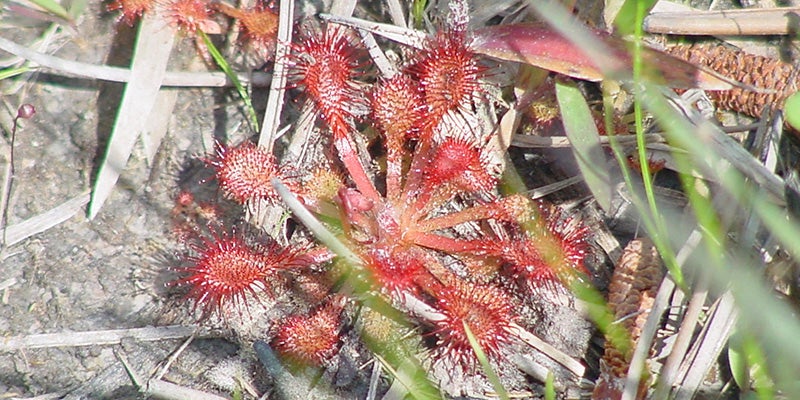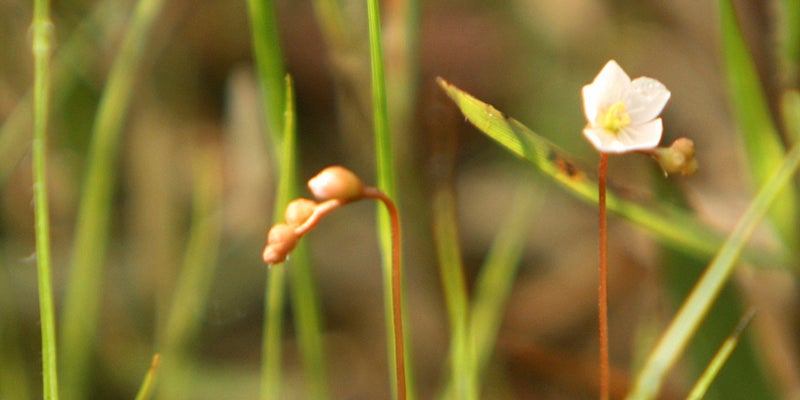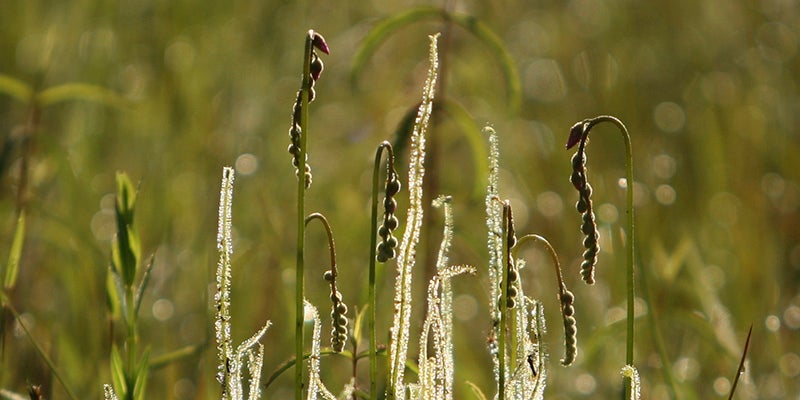The pitcher plant bog is putting on a show
Published 7:00 am Wednesday, April 29, 2020
By Patricia R. Drackett
Director, The Crosby Arboretum, Mississippi State University
Assistant Extension Professor of Landscape Architecture
Last week, I enjoyed touring our south pitcher plant bog with marketing coordinator Nickie Smith, who took some short videos of me describing some plants that called out to us, such as pitcher plants and native orchids. Look for these on our Facebook page! Although it will probably be a few more weeks until our public garden opens again and visitors will be able to walk along the bog, rest assured that no matter the time of year, you’ll always find something exciting on your journey here.
The south pitcher plant bog is the largest of two bogs in the Arboretum’s Savanna Exhibit, which is the pine grassland that parallels Ridge Road and makes up about a third of the site. Another bog is located at the northern tip of our property. Over the last ten years, the clusters of yellow pitcher plants here have expanded, and Mississippi wildflowers such as the purple spiked Liatris and scarlet pine lilies have also increased in numbers.
However, it’s the south bog we call “the” Pitcher Plant Bog. This is an area of extremely high species diversity, or, in other words, a larger variety of native wildflowers. What most visitors are unaware of when they visit in the spring months is that the beautiful tapestry they are looking at was met with was recently in a completely blackened state, the result of a controlled fire that takes place in January or February, weather permitting.
Following a winter burn, the grasses and perennials quickly turn green again, spurred by the nutrient-rich ash left by the fire. Soon, flowers of the yellow pitcher plants (Sarracenia alata) unfurl. These are known as “buttercups” to many locals, and their hollow leaves contain digestive enzymes that dissolve the insects which tumble into the structures.
Pitcher plants are a species of carnivorous plant that trap and digest insects by attracting them with sweet-smelling nectar. In the pitcher plant bog’s acidic, nutrient-poor soils, they have developed this method to obtain nitrogen through trapping and digesting insects. Insects that venture inside the pitchers are prevented from exiting by the thick forest of downward-facing hairs on the inside surface of the leaves. Bugs check in but they don’t check out!
As coastal wet pine savanna habitats become increasingly fragmented and lost to development, we have fewer opportunities to see these carnivorous plants. At the Crosby Arboretum, managing our grassland exhibit by consistent controlled burning suppresses underbrush and promotes a diverse collection of native plants that are well-adapted to periodic fire.
Our stroll last week through the south Pitcher Plant Bog provided a perfect opportunity to study these plants. If you look closely, you can find tiny dwarf sundews (Drosera brevifolia) growing against the bare earth, covered in tiny sparkles of ruby “dew”.
The bog contains other curiosities, such as another variety of sundew called a threadleaf sundew (Drosera tracyi). The plant is a mass – almost a foot in height – with long, upright thin leaves covered with drops of sticky dew that trap insects.
Search the Internet for the keywords “threadleaf sundew flower” and you will see why we are so delighted when we see this one! If you enjoy growing unusual plants, you may wish to try growing some carnivorous species in a terrarium or other bog environment. The internet abounds with mail order nurseries and organizations of carnivorous plant enthusiasts!
A tour of the bog will reveal a much smaller pitcher plant called Sarracenia psittacina, common name “parrot” pitcher plant. It is a compact species only four to six inches tall. Many of these plants in our south bog were relocated several years ago from a coastal construction site and are have adapted well to their new home.
Some species of insects and arachnids will co-exist with pitcher plants, never falling victim to their allure. We often spot a familiar little moth when we peer inside the “mouths” of the yellow pitcher plants.
At one time we thought we were doing a good deed when we released them, but after reading up on these insects learned they do just fine and dandy in there!
To explore a variety of topics on native and ornamental plants, horticulture, home landscape design, plants and maintenance, and gardening, visit the MSU Extension Smart Landscapes website at http://extension.msstate.edu/smartlandscapes or the Smart Landscapes Facebook page.
The Crosby Arboretum is located at 370 Ridge Road in Picayune, at I-59 Exit 4.
To receive updates on activities, including when we will be open to the public again, you may sign up for our email listserv at “Events Updates” on the main menu on our website at http://crosbyarboretum.msstate.edu.






